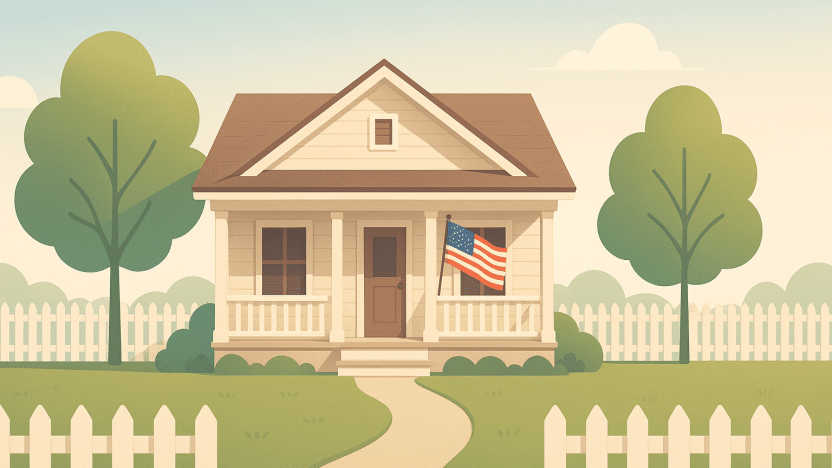“Buying a home is the American dream.” It’s a phrase that’s been baked into our culture for generations—so much so that it feels almost unpatriotic to question it.
And don’t forget about the white picket fence, right?
But is homeownership really the ultimate financial goal for everyone?
Let’s take a closer look at where this idea comes from, what the numbers say, and why it’s time to rethink what the “American dream” really means.
Why People Believe It
The belief that owning a home is the pinnacle of success in America has deep roots.
After World War II, government policies like the GI Bill and mortgage interest deductions made homeownership more accessible, and advertising campaigns promoted the idea that a house with a white picket fence was the key to happiness and stability.
This narrative was reinforced by pop culture, family expectations, and the notion that owning property is a sign of financial maturity and accomplishment.
But for some, the American Dream can turn into a nightmare.
The Reality
While owning a home can be a great choice for some, it’s not a one-size-fits-all path to prosperity or happiness. In fact, for many people, renting can be smarter, more flexible, and less risky.
Here’s why:
- High Costs and Risks: Homeownership comes with significant upfront costs (down payment, closing costs, moving expenses) and ongoing expenses (property taxes, maintenance, repairs, insurance). If the housing market dips or you need to move unexpectedly, you could lose money.
- Lack of Flexibility: Renting allows you to move for job opportunities, family needs, or lifestyle changes without the hassle and expense of selling a home. For younger people, or anyone in a transitional phase, this flexibility can be invaluable (Urban Institute).
- Investment Myths: While homes can appreciate in value, they’re not always a guaranteed investment. After accounting for inflation, taxes, and upkeep, the long-term return on real estate is often lower than investing in stocks or other assets.
- Changing Priorities: Today’s “American dream” is more about financial freedom, meaningful work, and personal fulfillment than simply owning a house. Many people are choosing to rent so they can travel, pursue passions, or live in high-cost cities where buying isn’t practical.
The American Dream of homeownership can turn into an “American Nightmare” for many because of a combination of financial risks, affordability challenges, and market realities that often go overlooked.
The pressure of mortgage debt, unexpected repairs, and the fear of losing one’s home can create significant stress, turning what was supposed to be a dream into a source of anxiety.
Expert Tip
Before jumping into homeownership, take a hard look at your finances, goals, and lifestyle.
Use rent-versus-buy calculators (NerdWallet), consider your job stability, and think about how long you plan to stay in one place. For some, renting and investing the difference can lead to greater wealth and flexibility.
Focus on building a solid financial foundation before making big commitments. This includes:
- Building an emergency fund
- Paying down high-interest debt
- Saving for retirement
- Investing in a diversified portfolio
Also, don’t dismiss renting (it’s not necessarily throwing your money away, another myth). Renting can offer flexibility, lower upfront costs, and freedom from maintenance headaches. It’s a great option if you value mobility, are unsure about your long-term plans, or live in a high-cost area.
Consider using resources to further your education, learn new skills, or start a business. These investments can often yield greater long-term returns—both financially and personally—than rushing into homeownership.
Bottom Line: Owning a home can be wonderful—but it’s not the only way to achieve the American dream.
Don’t let old myths pressure you into a decision that doesn’t fit your life. The real dream is building a life that brings you security, happiness, and freedom—whether you own, rent, or something in between.





